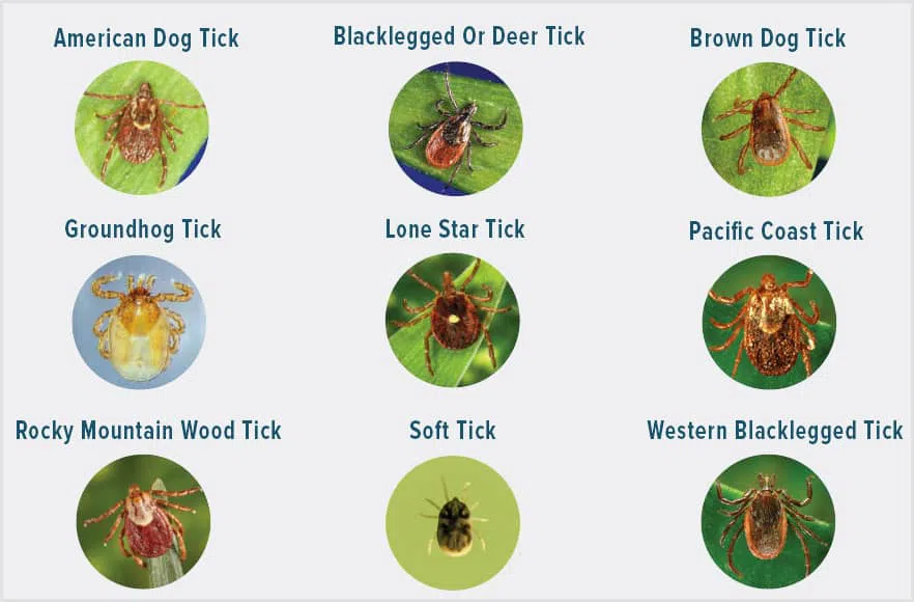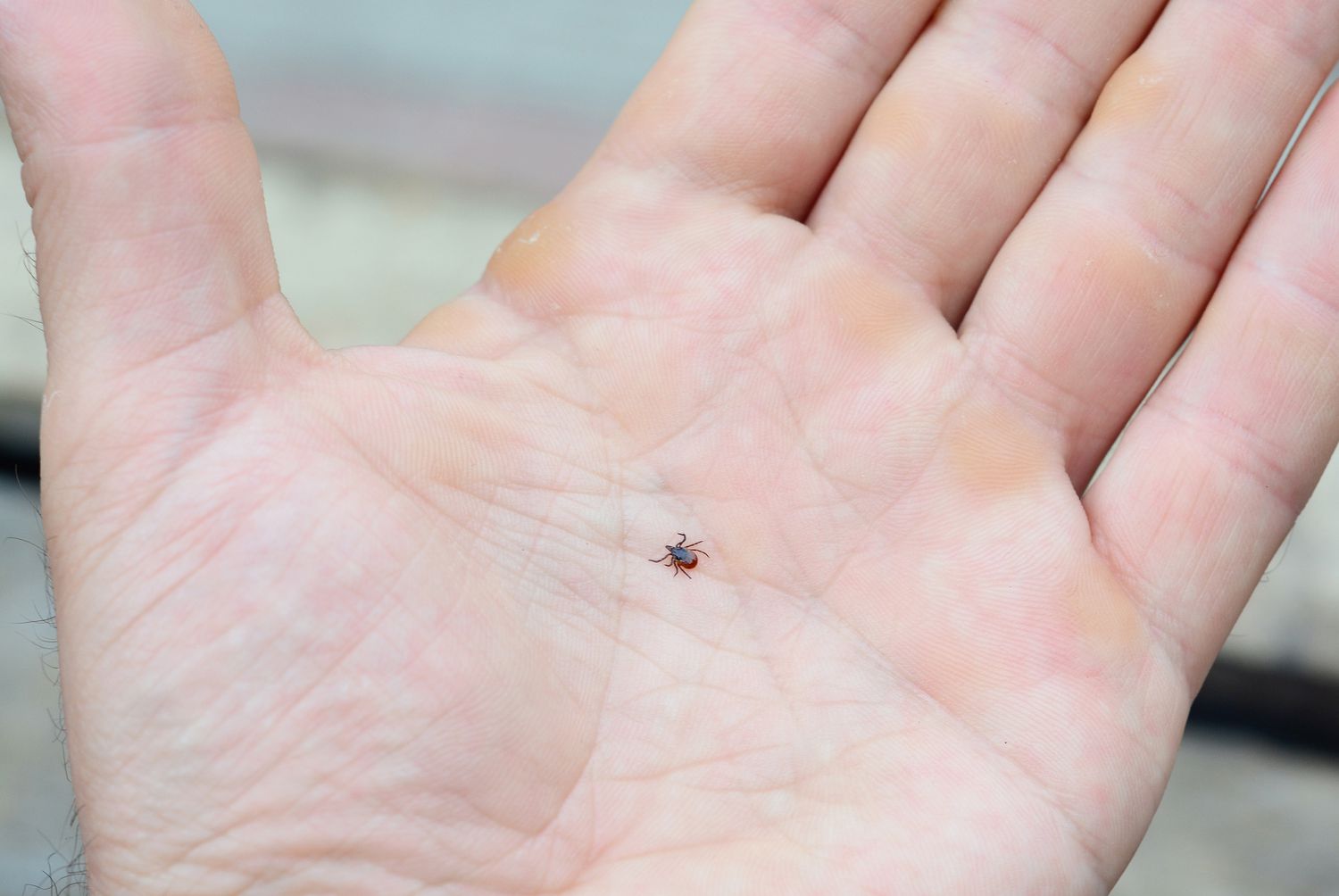Tick Removal Services in McKinney
serving residential yards, veterinary clinics, boarding kennels, parks, and commercial landscapes in Melissa and Princeton
Ticks wait quietly in turf, leaf litter, kennel cracks, and even patio rugs until a warm body passes by. Once attached, these tiny parasites feed for days and can transmit illnesses such as Lyme disease, ehrlichiosis, and Rocky Mountain spotted fever. Because Collin County enjoys mild winters, steady spring rain, and long, warm evenings, ticks stay active most of the year, especially in shaded lawns along Wilson Creek and wooded lots near Lake Lavon. Pest Control Xperts delivers thorough tick removal backed by local knowledge, science‑driven products, and clear prevention coaching, giving homeowners, property managers, and pet‑care professionals in McKinney, Melissa, and Princeton the freedom to enjoy outdoor spaces without constant worry.
Why Ticks Thrive in Collin County
McKinney occupies the northern edge of the humid Gulf Coastal Plain, where afternoon storms sweep up Highway Seventy Five and soak turf from Towne Lake Park to Eldorado Parkway. That moisture fuels lush grass and leaf litter, the prime habitat for larvae and nymphs. Summer temperatures rise into the mid‑nineties, yet nights cool only to the seventies, letting adult ticks continue questing long after sunset. Winter cold snaps seldom last more than two nights; thermostats inside lofts and ranch homes keep interiors near seventy degrees, so brown dog ticks stay active on bedding, crate pads, and carpet seams.
Wildlife adds pressure. Deer wander shaded greenbelts, raccoons and opossums raid trash bins behind historic downtown cafés, and stray cats roam alleyways near Tennessee Street. Each host drops egg clusters that mature rapidly in humid soil. In the master‑planned communities of Melissa, sprinkler systems run before dawn, leaving perpetual damp at fence lines. Meanwhile, rural acreage in Princeton borders pastures where livestock and feral hogs shed ticks on field grass. Without prompt, property‑wide treatment, a single introduction can escalate into thousands of biting parasites within weeks.

Tick Species Common in McKinney, Melissa, and Princeton
Tick | Key features | Hotspots | Associated concerns |
American dog tick | Dark brown with gray mottling | Boat docks, dog parks, park lawns | Rocky Mountain spotted fever |
Lone Star tick | Brown with white spot on female back | Brushy Creek trails, shaded cedar fence lines | Fever, meat allergy, ehrlichiosis |
Brown dog tick | Reddish brown, thrives indoors | Kennels, attic voids, vet lobbies | Year‑round reproduction, kennel re‑infestation |
Blacklegged tick | Small dark body, elongated oval | Rural woodlots, wildlife corridors | Primary Lyme carrier |
Confirming species drives product choice and follow‑up schedule. Pest Control Xperts technicians identify collected samples under magnification during every inspection.
Seasonal Tick Activity
Early spring
Soil temperatures pass sixty‑five degrees. Larvae emerge near live oaks in Erwin Park, and residents notice seed ticks on white socks after yard work.
Summer peak
Adult Lone Star ticks cluster on Bermuda grass at backyard barbecue zones. Brown dog ticks migrate from outdoor board‑and‑batten kennels to living‑room carpet seams.
Autumn front season
Deer ticks surge as wildlife fattens for winter. Pet owners in Stonebridge Ranch find nymphs on dogs after dusk walks along neighborhood trails.
Mild winter
Brown dog ticks thrive indoors behind baseboards and in attic insulation. Heavy infestations lay egg masses on crate pads in Melissa boarding facilities.
Risks Created by Tick Infestations
- Itchy bites that distract children and pets from sleep
- Potential transmission of bacterial or viral illnesses
- Secondary skin infections after scratching
- Costly veterinary visits for infected dogs and cats
- Poor online reviews when vacation‑rental guests find ticks on porch furniture
- Lost revenue for dog‑daycare operators forced to close for emergency sanitation
Because most life stages hide off the host, sprays aimed only at pets rarely solve the problem. Effective control targets every hiding zone onsite.

Our Five‑Step Tick Removal Program
1. Inspection
A McKinney‑based exterminator interviews property owners about pet habits, irrigation schedules, and wildlife sightings. Using a white drag cloth, the technician sweeps turf edges and shaded ground cover beds, collecting live ticks for species confirmation. Flashlights and crevice tools expose larvae under porch steps, inside crawl spaces, and around garage cabinets. Every hotspot is photographed and uploaded to a digital site map.
2. Indoor Service
- High‑powered vacuum extraction removes adults, eggs, and dried blood debris from carpets and upholstery.
- Insect growth regulator applied along baseboards halts larval development for up to five months.
- Micro‑encapsulated adulticide layered over the growth regulator eliminates emerging adults while remaining gentle on fabrics and hardwood.
- Targeted steam follows on leather furniture, thick draperies, and fleece throw blankets.
3. Outdoor Treatment
- Residual liquid barrier wraps the foundation and extends three feet into turf, emphasizing shaded drip‑line zones where pets rest.
- Granular control product spreads under shrubs, around swing sets, and along fence lines.
- Botanical dust is blown into crawl spaces, deck joists, and dog‑house floors, remaining effective despite humidity.
- Wildlife deterrent guidance covers sealing deck skirting, securing trash lids, and trimming ivy to reduce host traffic.
4. Client Preparation
Owners maximize results by washing pet bedding on hot, vacuuming vehicle seats, mowing lawn grass under three inches, and starting veterinarian‑approved flea and tick medications the day service begins.
5. Follow‑Up and Monitoring
Eggs buried deep in soil can hatch weeks later. Pest Control Xperts returns within three weeks to repeat drag tests and inspect interior glue boards. Any new activity receives targeted retreatment at no extra charge during the warranty period. Properties bordering creek beds or horse pastures often elect quarterly exterior service.
Neighborhood Service Snapshots
- Historic downtown lofts – Rooftop dog runs and planter boxes harbor brown dog ticks. Early‑morning vacuuming, planter‑soil dusting, and low‑odor growth regulator protect residents before cafés open.
- Melissa master‑planned yards – Sprinkler runoff keeps soil damp. Pre‑dawn granular applications combined with irrigation‑timer adjustments reduce larval survival without disrupting family life.
- Princeton farmsteads – Straw bedding requires dust application in tack rooms and residual sprays around stall entrances. Wildlife deterrent steps limit raccoon traffic to feed storage.

Why Choose Pest Control Xperts
- Local climate insight gained from tracking Collin County rainfall and soil temperatures, ensuring timely product application
- Integrated methods blending vacuum extraction, growth regulation, residual barriers, dust, and habitat change for lasting control
- Transparent reporting with time stamped photos, product labels, and drag‑test counts in a secure cloud portal
- Flexible scheduling including sunrise, evening, and weekend visits to fit clinic hours, school calendars, and work‑from‑home needs
- Cost‑saving maintenance plans that prevent infestations and protect rental ratings or kennel reputations
Everyday Prevention Tips
- Comb pets after walks at Erwin Park; drop any ticks into soapy water.
- Keep lawn grass below three inches and remove thatch.
- Create a gravel buffer along fence lines to reduce sheltered soil.
- Store bird seed in sealed bins and sweep spillage promptly.
- Repair leaking taps and HVAC drain lines near foundations.
- Swap bright porch lights for warm LEDs that attract fewer insects.
- Shake out camping gear after weekends at Lake Lavon before storing it.
- Inspect thrift‑shop rugs and couches with a flashlight.
- Keep pets on year‑round tick prevention; mild winters do not halt indoor breeding.
- Schedule an annual professional inspection each spring.
Frequently Asked Questions
How soon will bites stop?
Most customers notice relief within forty‑eight hours. Full removal usually requires the follow‑up visit to target newly emerged adults.
Do products harm landscaping?
Treatments are applied carefully at label rates and away from edible gardens. Technicians avoid blooming plants visited by pollinators.
Must residents leave during service?
No. Simply keep children and pets off treated surfaces until dry, typically two hours, and delay vacuuming for two days.
Contact Pest Control Xperts Today
When pets scratch nonstop, ankles show itchy red dots, or dark specks appear on bedding, ticks are already active. Waiting allows another generation to hatch and spread deeper into carpets, vehicle upholstery, and backyard turf. Pest Control Xperts stands ready with prompt, thorough tick removal in McKinney, Melissa, and Princeton. Our exterminator team inspects every corner, treats with precision, and equips you with prevention steps tailored to North Texas living. Contact us Today to schedule a comprehensive evaluation or enroll in a maintenance plan that keeps your property comfortable and tick free all year.
